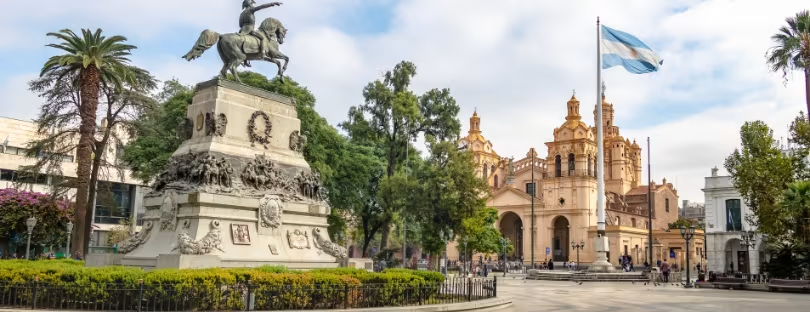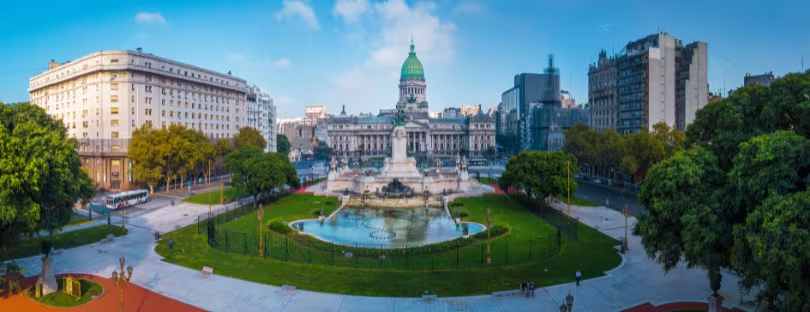Traveling to Argentina is an exciting adventure filled with culture, natural beauty, and great food. Whether you’re planning to explore the vibrant streets of Buenos Aires, hike in Patagonia, or visit the spectacular Iguazú Falls, having reliable mobile connectivity can make your trip much smoother. But when it comes to staying connected in Argentina, what’s the best option for getting a SIM card?
In this guide, I’ll walk you through everything you need to know about SIM cards in Argentina and why BNESIM is the solution you’ve been looking for.
Why You Need a SIM Card in Argentina
One of the first things you’ll want to do upon arrival in Argentina is to ensure you can stay connected with your family, friends, and work. Having local data and a local number can save you money on roaming charges and help you avoid hefty international fees from your home country’s mobile provider.
With a local SIM card, you’ll also be able to easily access maps, order taxis or rideshares, stay in touch via messaging apps, and share photos from your travels in real time. So, before you leave, it’s important to think about which SIM card option to go for.
Options for Getting a SIM Card in Argentina
There are a few different ways to get a SIM card in Argentina, and each has its pros and cons. Let’s break them down:
1. Buying a Local SIM Card
You can pick up a SIM card from local operators like Movistar, Claro, or Personal at airports, kiosks, or mobile shops throughout Argentina. These usually cost very little upfront—often under $5—and can be topped up with prepaid data packages.
But here’s the thing: buying a local SIM can be a bit of a hassle if you’re not fluent in Spanish. The registration process often requires showing your passport, and depending on where you are, you might run into some bureaucratic delays. Not to mention, you’ll need to make sure your phone is unlocked and compatible with Argentine networks.
Also, if you’re planning to travel around South America or are in Argentina just for a short time, getting a SIM that only works locally might not be the most convenient solution.
2. Roaming With Your Home Provider
This is the easiest but often the most expensive option. Most international carriers will charge you outrageous rates for data roaming in Argentina—think $10 or more per day just to use basic internet. Unless your provider offers some sort of travel pass or plan (and even then, it’s often limited), it’s just not worth it.
3. International SIM Cards (like BNESIM)
This is where things get interesting. Instead of fumbling around with paperwork or paying high roaming fees, you can show up in Argentina already connected. And BNESIM, in particular, stands out from the crowd.
So, What Makes BNESIM the Best SIM Card Option for Argentina?
Let’s get right into it. BNESIM offers international SIM and eSIM solutions tailored for travelers, digital nomads, and remote workers. Their SIM card works not only in Argentina but in over 200 countries, so you’re not tied down to a single destination.
Here’s why BNESIM is such a great fit for travelers headed to Argentina:
✅ No ID Registration Hassles
Unlike buying a SIM card in Argentina, BNESIM doesn’t require you to register with your passport or deal with complicated paperwork. You just order the SIM (or get an eSIM instantly), activate it, and go. It’s that easy.
✅ Affordable Data Plans
BNESIM offers super flexible data plans. For Argentina, you can grab a daily plan, a monthly plan, or even a pay-as-you-go option depending on your needs. No contracts, no surprises. And since it’s prepaid, you’re always in control of your spending.
✅ Works Across Borders
Planning to pop over to Chile or Brazil during your trip? With a local SIM, you’d need to switch again or pay roaming fees. With BNESIM, your coverage can easily extend to neighboring countries depending on your plan. One SIM for multiple countries = total convenience.
✅ 24/7 Customer Support
If something goes wrong with a local SIM, good luck getting support in English. BNESIM, on the other hand, offers 24/7 support in multiple languages. They’ve got your back, whether you’re in Mendoza, Salta, or trekking through Patagonia.
✅ eSIM Option Available
If your phone supports eSIM, you don’t even need to wait for a physical SIM to arrive. You can just download your BNESIM profile and get connected in minutes. This is especially great if you’re already on the road or planning a last-minute trip.
Real Talk: What’s the Catch?
Honestly? Not much. The only thing to keep in mind is that speeds and coverage depend on local network partners. In Argentina, BNESIM typically connects you to one of the major operators (like Movistar or Claro), so you still get strong, reliable service in most places. In remote rural areas, coverage might be patchier—but that’s true for local SIMs too.
Final Thoughts: Is BNESIM Worth It?
Absolutely. If you want to avoid the hassle of buying and registering a SIM in Argentina, skip sky-high roaming costs, and stay connected wherever you go—BNESIM is a no-brainer. It’s flexible, transparent, and designed with travelers in mind.
Whether you’re a digital nomad working remotely from a Buenos Aires café, or a backpacker navigating the wild beauty of Patagonia, BNESIM makes sure your connectivity doesn’t become a stress factor.
Plus, having your SIM card or eSIM ready before you land? That’s the kind of travel power move we’re all about.
Quick Recap
- Local SIMs are cheap but come with language and registration hurdles.
- Roaming is easy but usually very expensive.
- BNESIM gives you the best of both worlds: affordable, borderless, and simple.
So go ahead—plan that trip, book the flight, pack your bags—and grab your BNESIM before takeoff. Argentina is calling, and now, you can answer without worrying about your phone bill.
Want to check out BNESIM’s Argentina plans? Visit bnesim.com and explore your options. Better yet, try their app to activate your eSIM in just a few taps.
Happy travels! 🇦🇷📱✈️





